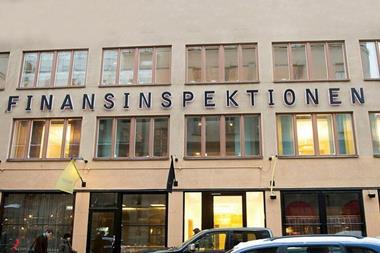The second annual IPE Real Estate Conference - held alongside the magazine's inaugural Awards Gala - drew a heavyweight collection of pension fund investors and consultants to the Amsterdam Hilton. Conference chairman Robin Ellison (who is also chair of the UK's National Association of Pension Funds) welcomed more than 200 delegates whose responsibilities included over 80 European pension funds controlling assets of over €800bn. They enjoyed hearing a range of presenters including keynote speakers Neil Crosby, professor of land management at Reading University and John Forbes, head of real estate tax at PriceWaterhouseCoopers.
Crosby presented evidence suggesting the average error between market price and valuation was 10% and could rise as high as 25%.
He attributed this to return "smoothing", lagging (ie running behind the market), and undue pressure on valuers to produce findings in accordance with asset managers' goals. He said the issue was particularly acute in Germany where the valuation system seemed designed to give absolutely "flat" (ie near-zero volatility) performance.
Forbes gave a thorough and almost transparent (for tax!) account of how tax can profoundly affect the ‘alpha' in investment performance. He made the point that asset managers might not be using the optimum vehicle for the type of fund they're running as, for example, a core fund needs a different structure to an opportunity fund to maximise the tax position and managers may simply adapt a structure they used previously for a different type of fund.
He said it was crucial to know if the vehicle favoured tax payers or the tax exempt (such as pension funds, usually), as it was hard to optimise both.
He noted that increases in the volume or real estate deals, in their cross-border nature and in the range of fund vehicles chosen meant that tax complexity was increasing all the time. He suggested that in the rush to find new opportunity areas of the world, investors should be very cautious about lack of stability in tax regimes and the lack of consistency in applying tax rules. He urged investors to match their tax risk to other levels of risk in the fund.
Infrastructure is often presented as the new gold rush for institutional investors and in his presentation on the subject independent consultant and fund trustee Georg Inderst pointed out that Australian pension funds have an average overall asset allocation of 5% to this class.
He felt that for a variety of reasons - including availability of product and the prices currently being bid for assets - such an allocation was unrealistic for European pension funds now, but he thought they might well attain this in
the future.
However, he warned that he did not trust the figures that apparently demonstrate the diversification benefits of infrastructure when compared with commercial real estate on the grounds of the examples being too few, and the tracking periods being too short.
The concept of pension funds joining together into investment ‘clubs' is seldom publicised but at the IPE Real Estate Conference delegates saw a presentation from Soren Schjoedt-Hansen, chief investment officer of Finanssektorens Pensionskasse (FSP) in Copenhagen.
He made the point that an alliance between his Danish pension fund and four others (the so-called Danish Club) was a club rather than a fund as their money is not pooled for collective investments. Each pension fund continues to invest on an individual basis, albeit in a fully-transparent environment where it can take advantage of fellow members' expertise, contacts and due-diligence findings, thereby reducing costs. He said: "We are open and honest but behind this we have a set of rules which we stick to."
Since the club was founded about three years' ago his own pension fund's allocation to real estate has risen sharply from 7% to 12%. The club's cross-border investments are being made across western Europe in a swathe from Birmingham, UK, to Madrid, Spain. Because of the curved shape of this swathe, Schjoedt-Hansen referred to it as "the rule of the banana investment".
Peer group reviews offer illuminating processes in most industries and the IPE Real Estate conference did not disappoint when it offered two pension fund case studies.
Peter van Gool is deputy real estate chief at Dutch railway fund SPF Beheer and also professor of real estate economics at the University of Amsterdam.
He said that being an academic made him comfortable in challenging orthodox opinion and he boldly stated that next year he sees an end to the prolonged bull-run in the international property cycle. In other words, from next year he anticipates purchase prices falling and yields finally rising.
Van Gool made other observations such as the fact that despite Amsterdam having the worst office market in Europe, developers were still building offices. He said that at average absorption rates, it would take 10 years to close the gap between demand and supply.
He also pointed out that the typical last-resort of turning empty offices
into residential blocks was much more difficult than it looked. Gool said: "I have several empty buildings in my portfolio but when we looked into the possibilities of converting to residential the problems easily outweighed the benefits."
Hermann Aukamp, director of the Nordrheinische Aerzteversorgung (the North Rhine doctors' fund) took a different - but no less illuminating - approach in his case study. He described the pyramid-style real estate investment profile of his fund, which has always been anchored by direct and
indirect domestic assets with smaller layers of international real estate and listed securities on the top. However, he pointed out that given the increasing globalisation of real estate investment he could anticipate a time in the future when the pyramid may be inverted.
Both Aukamp and Schjoedt-Hansen were recognised in IPE Real Estate's first ever awards. Aukamp won the regional investor award for Germany and a gold award for shrewdest real estate investment by a medium-sized pension fund. Schjoedt-Hansen and club partner Steen Jorgensen, chief executive of the Finanssektoren Pensionskasse fund, collected the award for the outstanding contribution to institutional real estate investment on behalf of the Danish Club. (For other award winners see separate story.)
Eberhard Waltz, founder of German consultancy Walzconsult and a former managing director of Allianz, chaired a panel discussing the dilemmas facing open-ended funds and the question of whether the imminent G-REIT (German real estate investment trust) would replace the open-enders or complement them.
The consensus of the panel was that G-REITs would be a complement rather than a replacement, and that it would be some time before their
usefulness could be assessed.
The panel tackled a number of difficult issues in the German investment market, and although Waltz urged to the audience to challenge the views expressed, delegates preferred to keep their own council.
A spirited asset allocation game was moderated by Dirk Soehnholz,
managing director of German consultant FERI. Representatives from IVG, Pramerica, LaSalle and Citigroup (the event's four gold sponsors) made the case for core, value-added, opportunity and development opportunities respectively. The morning after the main conference, Aberdeen
Investment Managers held an advanced investor workshop for pension fund delegates. It was strongly attended and featured revealing presentations on the fund-of-funds concept (which Aberdeen has pioneered in Europe) and on the opaque concept of managers' fee structures.













No comments yet